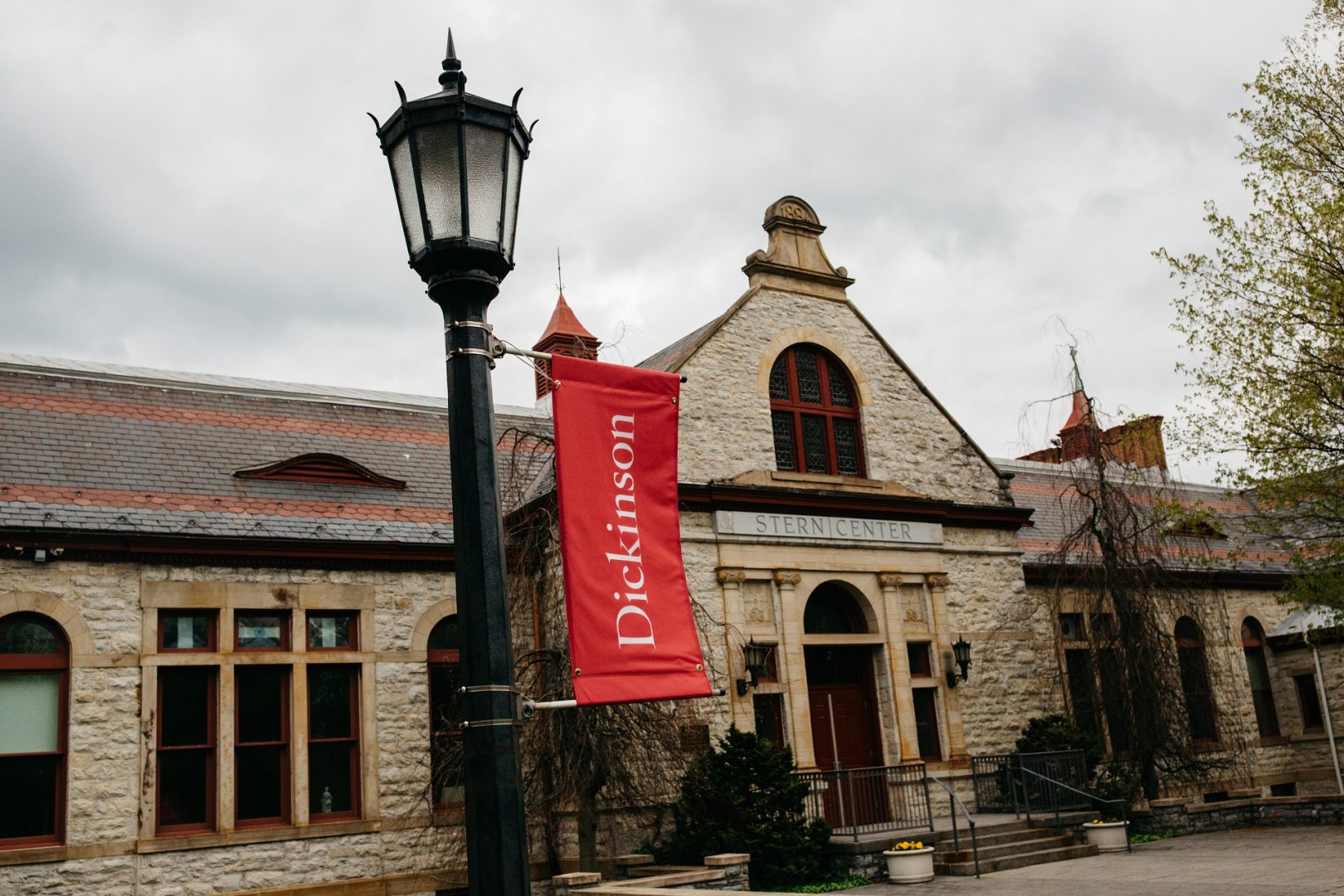
The Dickinson College Campus in Carlisle, Cumberland County.
Kate Landis / PA Post


The Dickinson College Campus in Carlisle, Cumberland County.
Kate Landis / PA Post

Kate Landis / PA Post
The Dickinson College Campus in Carlisle, Cumberland County.
Two Pennsylvania colleges are now carbon-neutral — joining only a handful of other schools with the same achievement nationwide.
Allegheny College in northwestern Pennsylvania and Dickinson College in central Pennsylvania hit their goals this month.
In 2008, each college was generating nearly 19,000 metric tons of greenhouse gases.
To reach net-zero, they relied on a mix of energy efficiency measures, renewable energy projects, and purchasing credits to offset what they still emit.
Pennsylvania is the fifth largest carbon emitter in the United States at 215 million metric tons as of 2017.
Scientists say greenhouse gas emissions must be cut dramatically to avoid the worst effects of climate change.
Ken Shultes, associate vice president for sustainability and facilities planning at Dickinson College, said some of their biggest projects were a 3-megawatt solar farm and a campus-wide LED lighting blitz. The college also entered into a power purchase agreement for solar energy earlier this year.
Shultes said the college has reduced its emissions by 25 percent since 2008 and is offsetting the other 75 percent. Offsets include renewable energy credits as well as efforts to remove carbon from the atmosphere, like planting trees. Over time, the college hopes to flip that ratio.
The college is planning to add more solar panels on campus and is experimenting with a biogas project at its organic farm to turn cow manure and food waste into energy.
Director of Sustainability at Allegheny College Kelly Boulton said the school does a lot to engage with students on the issue.
“We want them to absorb as many sustainable habits as they can while they’re on campus,” she said.
Each fall, Allegheny holds a four-week energy challenge to motivate students to cut down on their electricity use. Boulton said they typically cut consumption by 12 percent. She added that savings from that initiative went to fund campus solar panels.
Both Allegheny and Dickinson say a big part of their role is to educate the next generation of climate leaders.
Shultes said they look at climate change as an environmental issue as well as a social imperative.
“Because we think that climate disruption, like other catastrophes, really impacts low-income and underprivileged people in a way that is very inequitable,” he said.
Boulton said carbon neutrality is not the end goal, but a measure to drive progress. Part of the college’s ongoing climate goal is to build resilience in their community.
“Even though we have taken action to reduce our contribution to climate change, the reality is we’re still going to have to deal with the impacts of a climate that is already changing,” Boulton said.
As anchor institutions in their communities, colleges can be highly influential in helping the country reduce carbon emissions, said Tim Carter, president of the group Second Nature, which tracks and assists colleges toward carbon neutrality.
“They have a lot of credibility,” Carter said. “They do a lot of convening and they’re perceived as a neutral convener for important discussions that really do change the public discourse around certain topics, and definitely climate and climate action is one of those.”
Carter said colleges are great places for innovation at a pilot level. They are generally large energy users with the ability to make long-term investments, adding to their influence.
He noted Penn State is a global leader on climate research and climate action. The University of Pennsylvania recently announced a solar project to power about 75 percent of its academic campus and health system.
Many schools that made a carbon neutral commitment through Second Nature have a target date of 2050.
StateImpact Pennsylvania is a collaboration among WITF, WHYY, and the Allegheny Front. Reporters Reid Frazier, Rachel McDevitt and Susan Phillips cover the commonwealth’s energy economy. Read their reports on this site, and hear them on public radio stations across Pennsylvania.
(listed by story count)
StateImpact Pennsylvania is a collaboration among WITF, WHYY, and the Allegheny Front. Reporters Reid Frazier, Rachel McDevitt and Susan Phillips cover the commonwealth’s energy economy. Read their reports on this site, and hear them on public radio stations across Pennsylvania.
Climate Solutions, a collaboration of news organizations, educational institutions and a theater company, uses engagement, education and storytelling to help central Pennsylvanians toward climate change literacy, resilience and adaptation. Our work will amplify how people are finding solutions to the challenges presented by a warming world.